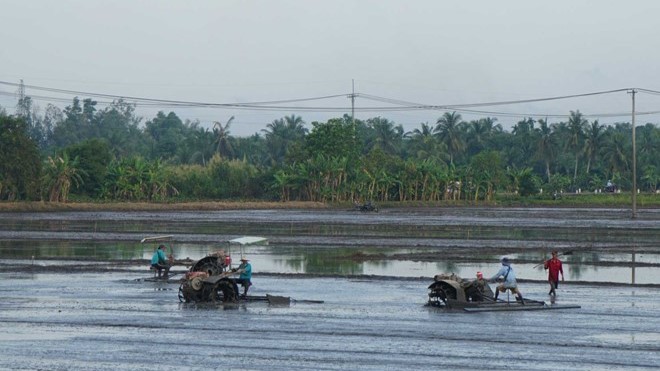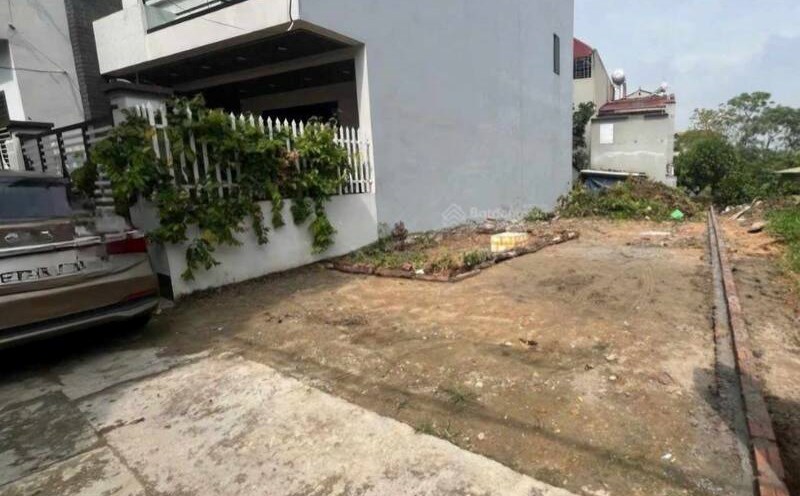Early sowing
According to the forecast of the National Center for Hydro-Meteorological Forecasting, from October to December 2024, the ENSO phenomenon is likely to transition to La Nina state with a probability of 60-70%. The rainy season in the South may end later than usual (around the second half of December 2024).
Faced with complex weather developments, farmers in provinces and cities in the Mekong Delta such as Hau Giang, Can Tho, etc. have proactively responded with many measures before planting new crops to reduce risks.
Now that the water level in the field has decreased, Mr. Tran Van Tu (Long My district, Hau Giang province) is preparing to clean the field to sow the 2024-2025 winter-spring rice crop. According to this farmer, winter-spring is the most anticipated rice crop of the year because it is usually very expensive. To avoid the effects of drought and salinity and lack of irrigation water at the end of the crop, he plans to sow in mid-November, 20 days earlier than last year.
“This year, the weather has been very volatile, so I am actively improving the fields, reinforcing the embankments and planting according to the local recommended schedule to avoid damage from weather, pests and diseases as well as the effects of drought, salinity and lack of irrigation water at the end of the rice crop. Because once the rice is affected by salinity, it will not be harvested in time, and that crop will almost be a loss of capital or will be completely lost,” said Mr. Tu.

In Can Tho, Ms. Ho Thi Nhien (Thoi Lai district) plans to plant ST25 rice for the winter-spring crop. Ms. Nhien said that although the weather is erratic, the amount of water in the fields has receded a lot, plus there is a drainage system so it will be possible to plant in mid-November.
“This year I plan to plant 15 days earlier. If there are no problems, I will have rice to sell after Tet and it will be very expensive. What I need to do now is to regularly check the fields, water levels, reinforce the dykes and increase the pumps to be able to cope with the remaining high tides,” Ms. Nhien shared.
Avoid rice planthoppers, avoid drought and salinity
According to the Department of Agriculture and Rural Development of Hau Giang province, the rainy season is likely to last long in the province, and flooding will greatly affect production at the beginning of the winter-spring rice crop in some areas.
To avoid damage caused by pests, diseases and weather and hydrological factors that are unfavorable to production, the Department announced that the 2024-2025 Winter-Spring rice planting schedule will be divided into 3 phases. Phase 1 from November 11 to 17, 2024 for areas with closed dikes and complete drainage pumping systems. Phase 2 from December 9 to 15, 2024 for the main Winter-Spring rice crop in the province. Phase 3 from January 9 to 15, 2025 for low-lying areas, where flood waters recede slowly every year, sowing late.
The Department of Agriculture and Rural Development of districts, the Economic Department of towns and cities develop separate sowing schedules for units suitable to local production practices according to the principle of "avoiding planthoppers" and avoiding drought and salinity.
The development of late-season rains in 2024 is very complicated. Farmers need to regularly monitor weather forecast information to minimize damage caused by storms when deciding to sow.











